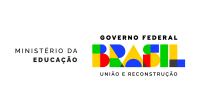When 49-year-old para-swimming athlete Adriano Lima was called up to represent Brazil in the 1996 Atlanta Paralympics, the evaluation process for choosing his category was not simple. Like many para-athletes, Adriano, who has been paraplegic since he was 17 due to a work accident, had his category changed and discussed at least three times before he could be officially classified in the competition. Finding an objective way to categorize para-athletes, who need to have aspects such as mobility and sensitivity assessed before entering the events, is one of the main challenges in making para-sports competitions more democratic and fair. In Macaíba, Rio Grande do Norte, researchers from the Santos Dumont Institute (ISD) in the areas of neuroscience and neuroengineering are increasingly focusing on the issue in order to develop technologies and research that will make this reality possible.
National classifier in the Paralympic boccia and soccer modalities for people with cerebral palsy, the master in Neuroengineering Thaísa Lucas Filgueira, 34 years old, explains that, currently, the classifications that will define whether para-athletes are eligible or not to compete in a certain modality, as well as their respective competition class, depend on clinical criteria that are subjective for the evaluator.
As a result, the final decision or confirmation of the para-athlete’s class may take longer and generate discussions between classifiers, coaches and athletes, who may present different interpretations for certain clinical tests applied. “The development of technologies that assist in clinical evaluation processes allows for more precise classifications and with more objective criteria. Research related to how our brain behaves when performing a certain activity can help classifiers to have greater clarity about what and how they should carry out their clinical investigations”, explains the evaluator.
ISD professor and researcher Edgard Morya explains that the main advantage of using aspects of neuroscience and neuroengineering associated with parasports practices is that they allow us to understand how deficiencies affect the nervous system and, from there, propose tools that can be used to assess and improve athletes’ performance. “There are two main types of application. We use inertial sensors and electromyography, for example, to assess a person’s movement, which can be translated into a type of diagnosis capable of identifying whether that muscle really had spasticity (contr), or whether what is happening is a voluntary contraction. It is possible to differentiate muscle activation and, with this, improve the athlete classification system”, he states.
Performance improvement
Being able to improve the performance of para-athletes was the main goal of researcher Matheus Dantas. Matheus, who coordinated the National Association of Sports for the Disabled (ANDE) between 2016 and 2020, explains that neuroscience can provide many answers for sports that work with people who have injuries to the Central Nervous System, such as bocce. Currently pursuing a PhD in Physical Education at the State University of Campinas (Unicamp), he reports that contributions range from monitoring the eye patterns of athletes in precision sports to the development of virtual realities capable of optimizing training, such as IvR Boccia, developed at ISD. “A new world is opening up for the evaluation and training of Paralympic athletes, and this world involves technology and neuroscience. Certainly, in a short period of time, we will have the presence of neuroscientists within the multidisciplinary teams of the most diverse Paralympic sports,” assures Matheus.
According to Professor Edgard Morya, investments in this area are still insufficient compared to Brazil’s potential, but training professionals who can come up with accessible solutions to popularize and facilitate the practice of sports among people with disabilities is the first step to strengthening and valuing the area. “The idea of training postgraduate students to conduct research with athletes, para-athletes, and adapted games is to ensure that this type of research helps to bring more attention and funding to this sector, in addition to training more human resources to think about these areas. If there are no human resources, there will be no investment. Improving the performance, quality of life, and social relationships of the people involved in this work is the goal,” he emphasizes.
Text: Mariana Ceci / Ascom – ISD
Photograph: Ricardo Araújo / Ascom – ISD
Communication Office
comunicacao@isd.org.br
(84) 99416-1880
Santos Dumont Institute (ISD)
It is a Social Organization linked to the Ministry of Education (MEC) and includes the Edmond and Lily Safra International Institute of Neurosciences and the Anita Garibaldi Health Education and Research Center, both in Macaíba. ISD's mission is to promote education for life, forming citizens through integrated teaching, research and extension actions, in addition to contributing to a fairer and more humane transformation of Brazilian social reality.















